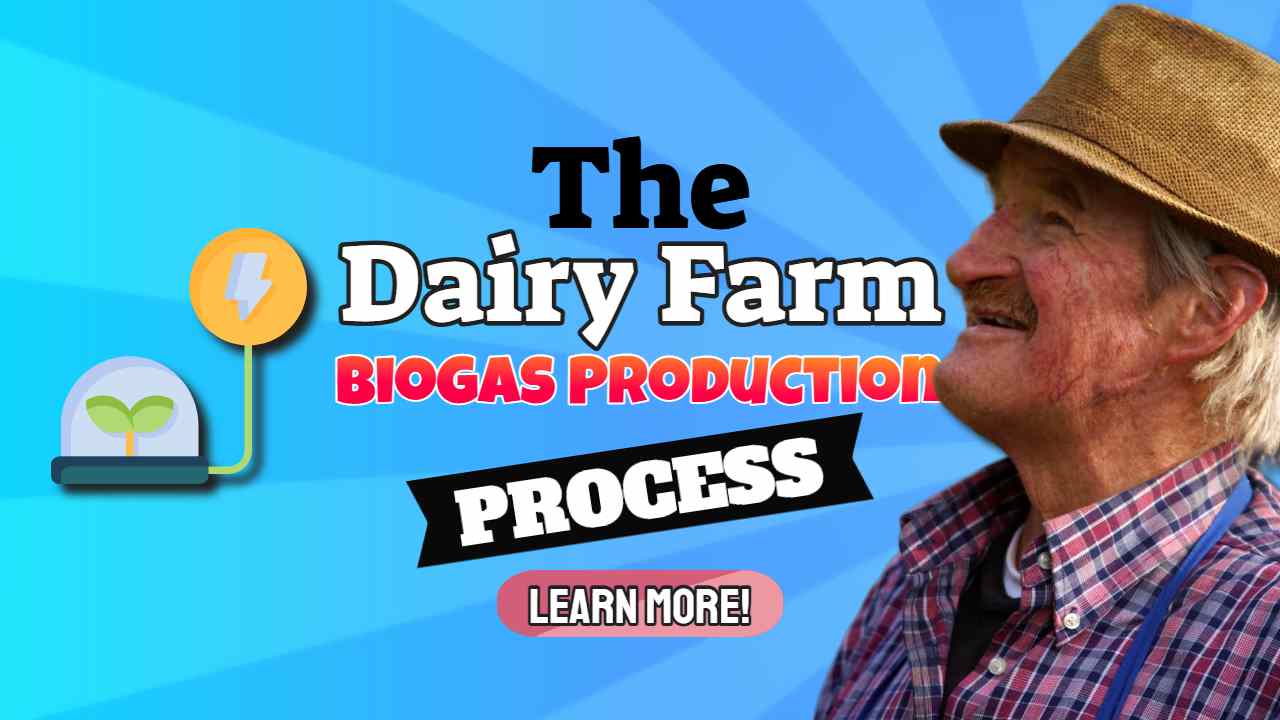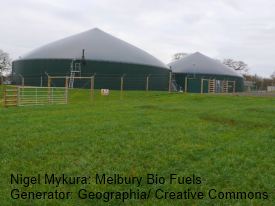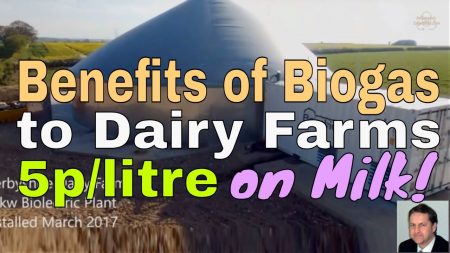The dairy farm biogas production process begins with the collection of manure and other organic materials from the farm. The organic materials are then mixed with water and degraded by bacteria to create biogas.
The biogas is then pressurized, cleaned and purified to grid quality and used to power facilities on the farm. That in a nutshell is the dairy farm biogas production process.
The Need for Sustainable Agriculture and Waste Management Practices in Dairy Farming
The dairy industry is one of the most important agricultural sectors in the United States and many other countries, providing milk and milk products to consumers.
The dairy industry is also one of the most environmentally-sensitive industries, as dairy farmers are responsible for managing a large amount of waste. In order to produce milk sustainably and manage waste in an environmentally-friendly way, dairy farmers must adopt sustainable agricultural practices and waste management practices.
One of the most important factors for the industry as it moves to more sustainable agricultural practices is minimizing the use of synthetic inputs.
Moving away from the use of non-renewable energy sources
This includes moving away from the use of non-renewable energy sources, and part of this means limiting the use of pesticides, fertilizers, herbicides, and other chemicals. Synthetic inputs disrupt the natural cycles of plants and can have negative impacts on the environment and humans.

Sustainable Dairy Farming practices
In addition, dairy farmers must also use sustainable practices to manage the enormous quantities of waste they generate. This means reducing the amount of waste that is produced, finding creative ways to recycle and reuse waste, and using energy sources that are environmentally friendly.
Renewable biogas energy
The single most effective way to do that is through the operation of anaerobic digestion on farms to produce renewable biogas energy, which can be exported to the power grid, and also used on the dairy farm.
For example, farm-produced biogas once upgraded to become biomethane is a wonderfully low emissions fuel for the farm's tractors, and farm-based transport vehicles in general.
The dairy industry is an important part of many developed economies. The adoption of sustainable practices throughout the dairy sector will be essential if the US is to achieve the commitments made to decarbonise and produce Net-Zero carbon emissions by 2050.
Components of a Dairy Farm Biogas Plant: Digester, Gas Holder, and Other Equipment
A dairy farm biogas plant can have three main components:
- a digester,
- a gas holder, and
- other equipment.
The digester processes cow manure and other organic waste to produce methane, which can then be used to generate electricity or heat. The gas holder holds the methane, and other equipment processes it into natural gas.
The Dairy Farm Biogas Production Process: Stages and Mechanisms
The dairy farm biogas production process begins with the collection of manure from the farm animals. The manure is then digested in an anaerobic digestion plant. The solid output from the digester is often mixed with a soil amendment and composted in a pile to create an earth-covered compost pile. The pile is then turned very slowly to help break down the organic matter.
The microbial activity in the digester transforms a lot of the organic matter into biogas which when combusted produces heat. The biogas is then used to power farm buildings or gas engines.
Types of Feedstock Used in Dairy Farm Biogas Production
Different types of feedstock can be used in dairy farm biogas production. Some examples include:
- cow manure,
- horse manure,
- crop waste, and
- renewable biomass.
Cow manure is the most common feedstock used in dairy farm biogas production. This is because cow manure produces a moderate yield of methane, needs pretreatment to minimise environmental pollution, and is reliably available at no charge, making it a good choice for producing biogas.
Horse manure is also a good feedstock for biogas production, but it has less methane than cow manure. Municipal solid waste is a good feedstock for biogas production, but it is not as high in methane as source-separated kitchen waste (food waste).
Food waste is a good feedstock for biogas production because it is high in methane output.
Benefits of Dairy Farm Biogas Production: Energy Generation, Fertilizer Production, and Waste Treatment
Dairy farms produce a considerable amount of manure, which can be converted into organic fertilizer. This organic fertilizer can then be used on nearby crops, helping to increase the production of food.
Additionally, a proportion of the manure is converted into biogas, which can then be used to generate energy. This energy can then be used to power equipment on the farm, helping to increase the production of crops.
Finally, biogas can be used to produce heat or provide energy to export at a profit. This versatility makes dairy farm biogas production an attractive option for farms and businesses.
Planning and Designing a Dairy Farm Biogas Plant
It is evident that the dairy farm biogas plant presents an advantageous option for farmers who are looking for a more sustainable and environmentally friendly way to operate their farms.
The use of biogas from dairy farms has the potential to reduce agricultural greenhouse gas emissions by 90-95% and produce biogas that is clean, affordable, and reliable. Furthermore, the use of a dairy farm biogas plant can also create jobs in rural areas, which is particularly beneficial in areas that are struggling economically.
The purpose of this article is to highlight the planning and design process involved for a dairy farm biogas plant. The first step in planning a dairy farm biogas plant is to identify the types of biogas that will be produced.
The next step is to determine the size of the plant and the engineering requirements needed to produce the biogas.
The final step is to design the plant and procure the necessary equipment.
Operation and Maintenance of a Dairy Farm Biogas Plant
Operation and maintenance of a dairy farm biogas plant can be a complex process requiring a significant amount of knowledge and experience. A biogas plant operated by a dairy farm must account for everything from the composition of the manure to the processing of the methane gas.
An important part of the operation of a dairy farm biogas plant is the maintenance of the system.
This includes ensuring that the equipment is in good working order and that the system is monitored regularly for any potential problems. Regular cleaning of the plant and its components is also necessary to keep the system running smoothly.
A dairy farm biogas plant is a valuable tool for the production of renewable energy. Let's not forget that by using waste from the dairy farm, operators can generate energy that can be used to power the farmhouse and other on-farm facilities, as well as to provide power to the local grid.
Case Study: Successful Implementation of Dairy Farm Biogas Plants
In recent years, the use of biogas from dairy farms has resurfaced as a promising technology for the reduction of greenhouse gas emissions and the enhancement of soil health. Dairy farms in the United States produce about 220 million gallons of manure each day, containing about 140 million pounds of dry manure.
The first dairy farm to retrofit a biogas plant was in Wisconsin in 2006. Since then, more than 150 dairy farms have installed biogas plants in the United States, using a variety of technologies. The majority of these plants use an anaerobic digestion technology, which takes the gas produced by the cow’s manure and breaks it down into methane and carbon dioxide.
The benefits of biogas from dairy farms include: Reduced greenhouse gas emissions Enhanced soil health Enhanced production efficiency The biggest challenge to the widespread adoption of dairy farm biogas plants has been the cost of the technology. However, recent cost
Economic and Environmental Benefits of Dairy Farm Biogas Production
Dairy farms produce methane and carbon dioxide as by-products of their dairy operations. Methane is a potent greenhouse gas that is 86 times more potent than carbon dioxide over a 20-year period.
The United States Environmental Protection Agency (EPA) has set the methane emissions from dairy farms at a capped output of stated metric tons a year. Dairy farms that produce biogas from their cow manure have the potential to reduce their methane emissions by up to 90%. The environmental benefits of dairy farm biogas production are significant.
Dairy farms produce renewable natural gas. This should not be considered to be a greenhouse gas. Methane is 86 times more potent than carbon dioxide over a 20-year period. Dairy farming is one of the most environmentally intensive industries, and the Environmental Protection Agency (EPA) has set the methane emissions from dairy farms at 10,000 metric tons a year.
Challenges and Future Directions of Dairy Farm Biogas Technology
Dairy farmers are currently installing a number of biogas technologies to convert cow manure and other agricultural wastes into methane and other useful gases.
These technologies include anaerobic digestion, completely mixed SBR digesters, methane pipelines, and anaerobic reforming.
Future Directions of Dairy Farm Biogas Technology seeks to understand the challenges and opportunities facing these various biogas technologies, outline research priorities, and develop future market potential.
An important challenge facing all biogas technologies is potential interference from odours and other agricultural waste constituents. Poorly managed cow manure can also produce methane while stored which is also explosive.
This opportunity of earning revenue from farm biogas sales has led some dairy farmers to explore alternatives, such as anaerobic digestion.
Other dairy farmers are exploring new strategies to manage cow manure, such as CSTR and plug-flow digesters, which use an anaerobic environment to break down manure into methane and carbon dioxide. Methane can be used as a fuel or feedstock in
Conclusion: Dairy Farm Biogas Production as a Promising Solution for Sustainable Agriculture and Waste Management.
Dairy farm biogas production presents a promising solution for sustainable agriculture and waste management. The biogas can replace diesel or petrol for powering farm equipment, and the residue can be used to fertilize the soil. Furthermore, biogas can be used to generate electricity, which can be used to power farm buildings. Dairy farm biogas production can help to improve the environmental conditions of dairy farms, and it can also reduce the dependence on fossil fuels.
A Biogas Plant Can Add 5p/litre to Dairy Income
One UK farm has gone so far as to publicise the added value of their biogas plant as providing an equivalent of 5p/litre on the milk they sell. That's a real benefit of the biogas production process.

Although it is now fairly common for farms to cease milk production, it was a new development when this post was first written in August 2012. It was a time when UK milk prices at the farm gate were at a historical low.
There were a number of dairy farmers who were, as shown by the reports of the time (copied below), considering selling their herds and going for biogas production instead.
Benefits of the On-farm Biogas Production Process
Adding a biogas plant to a farm is partly about investment in an anaerobic digestion plant and the increased diversity that brings to farming. Diversity in any business tends to reduce the risk of insolvency to the business in times of change.
For dairy farmers, a biogas plant can do a lot to stabilise the financial prospects of a dairy farm, and “provide a nice hedge against the vagaries of the milk market, where prices can fluctuate wildly”.
That quotation is taken from our first article, below, but there are more benefits than might at first be imagined.
Spin-off Benefits
We have often spoken about the spin-off benefits to farms in:
- improved farm waste management,
- reducing nitrogen run-off, and not least
- the reduction in bought-in chemical fertiliser costs from using the biogas digester's own output of natural fertiliser, and soil-improving fibrous material.
“Keeping a family-run farm strong”
What we did not previously appreciate was the benefit described in our articles the benefit of a biogas process in keeping a family-run farm strong. A strong family is one which provides jobs for family members and the local community.
Splitting up farms among large families ultimately results in farm holdings too small to be viable. But, building a biogas plant creates jobs for interested family members to take part in. Skilled staff are needed to operate the biogas process and their salaries can easily be met by the income from the biogas.
This is a great way for a farming family to continue to grow with their financial stability assured across the generations.
Read on to find out more!
The first article below is from a UK perspective:
Dairy Farmers Consider Selling Herds As Milk Price Row Rumbles On
“Anaerobic Digestion (AD) specialist EnviTec Biogas UK has seen an increase in enquiries from farmers thinking about moving out of dairy. They are considering concentrating solely on power and heat generation.
said EnviTec, … (August 2012) via www.thisisplymouth.co.uk [Link no longer available.]
Farmers are Going for Biogas Plants!
So, clearly, farmers in both nations are simultaneously coming to the same view, from the same pressures, and they are going for biogas plants.
They see these either as:
- profitable additions to provide diversification to their dairy farms, or
- as alternative business models cutting out the dairy and feeding all their grass to a biogas plant.
Advantages and Disadvantages of Dairy Farming Versus Grass-Feeding a Biogas Plant
What we said in August 2012:
Personally, I would think it still to be a step too far to abandon milk production entirely in favour of AD and energy production. That's because surely the price of milk paid to dairy farmers in the UK will rise back up again.
The UK has experienced a very wet period. A return to a better milk price could, once the plentiful grass (and easy milk and cream production) of the last (very wet) three or four months becomes a distant memory. Hopefully, a wholesale milk price rise will occur as the autumn moves into winter, in a few months' time.
However, that is not to say that grass and silage (stored for winter use) from farms in good grass-growing regions of the UK, don't have a great feedstock to run a biogas digester on – all year round.
UK dairy farms are appreciably smaller than US farms
 But, most UK dairy farms are smaller than US farms and are simply not large enough to feed a big biogas plant. A process plant big enough to provide economies of scale. And, pay the frequently high upfront costs for the necessary power grid connections.
But, most UK dairy farms are smaller than US farms and are simply not large enough to feed a big biogas plant. A process plant big enough to provide economies of scale. And, pay the frequently high upfront costs for the necessary power grid connections.
We would therefore be surprised if the farmers of the UK will very often be numbered among the dairy farmers that consider selling herds.
Of course, there are buyers emerging in the UK, who will take all the biogas from a large enough plant and upgrade it on-farm to CNG quality. They will also, tanker it off-site to supply the soon to be emerging chains of CNG (biomethane) powered “petrol stations”. These arrangements require no power output-to-grid connection.
From across the Atlantic we bring you our second article extract:
An Intangible But Crucial Benefit of the Farm Biogas Production Process
“EAE worked closely with two partners to bring this anaerobic digestion system … But one “soft benefit” of the farm's new anaerobic digestion system is simply as a way to build the business, to keep our growing family together. via Exeteragrienergy
As ever, we encourage you to comment on the value of the biogas production process to farms. We would be interested in your views.
This page is a February 2023 update of a page originally posted on 17 August 2012, and also updated in 2019



